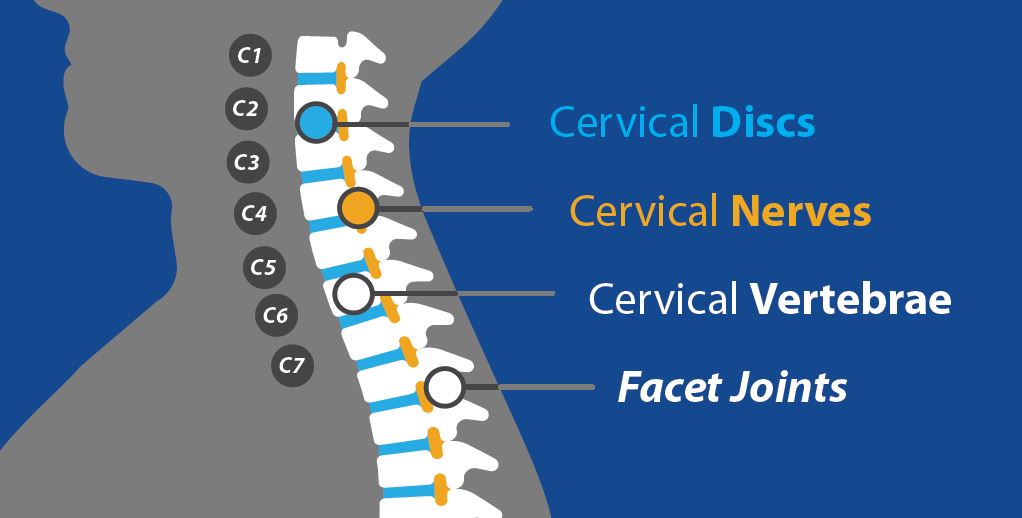Articles by Laxmaiah Manchikanti, MD
and Mahendra Sanapati, MD

What do you know about neck anatomy?
Pain in the neck is common, second only to pain in the low back. The cervical spine or neck starts at the base of the skull and through a series of 7 vertebral segments connects to the thoracic region of the spine.
Among the 7 cervical vertebrae, the first two are extremely unique, providing most of the rotation of the neck and the head.

The 7 vertebrae of the cervical spine are connected in the back by 2 facet joints, one on each side, which allow for forward and backward extensions, as well as twisting movements.
In between the vertebrae are 6 cervical discs that act as shock absorbers and also allow for flexibility and movement of the neck. The cervical spine has 8 cervical nerves from C1 through C8, that branch off of the spinal cord and exit through the neural foreman in the back of the spine.
The facet joints, discs, and nerve roots can be responsible for pain in the neck, headaches, and pain in the upper extremities and occasionally into the chest wall. The discs may degenerate, irritating the nerves, but they also may bulge, protrude, or herniate with wear and tear over time or from an injury, thus causing pain. Arthritis can develop in any part of the spine including the facet joints, leading to spinal stenosis or facet joint arthritis.
